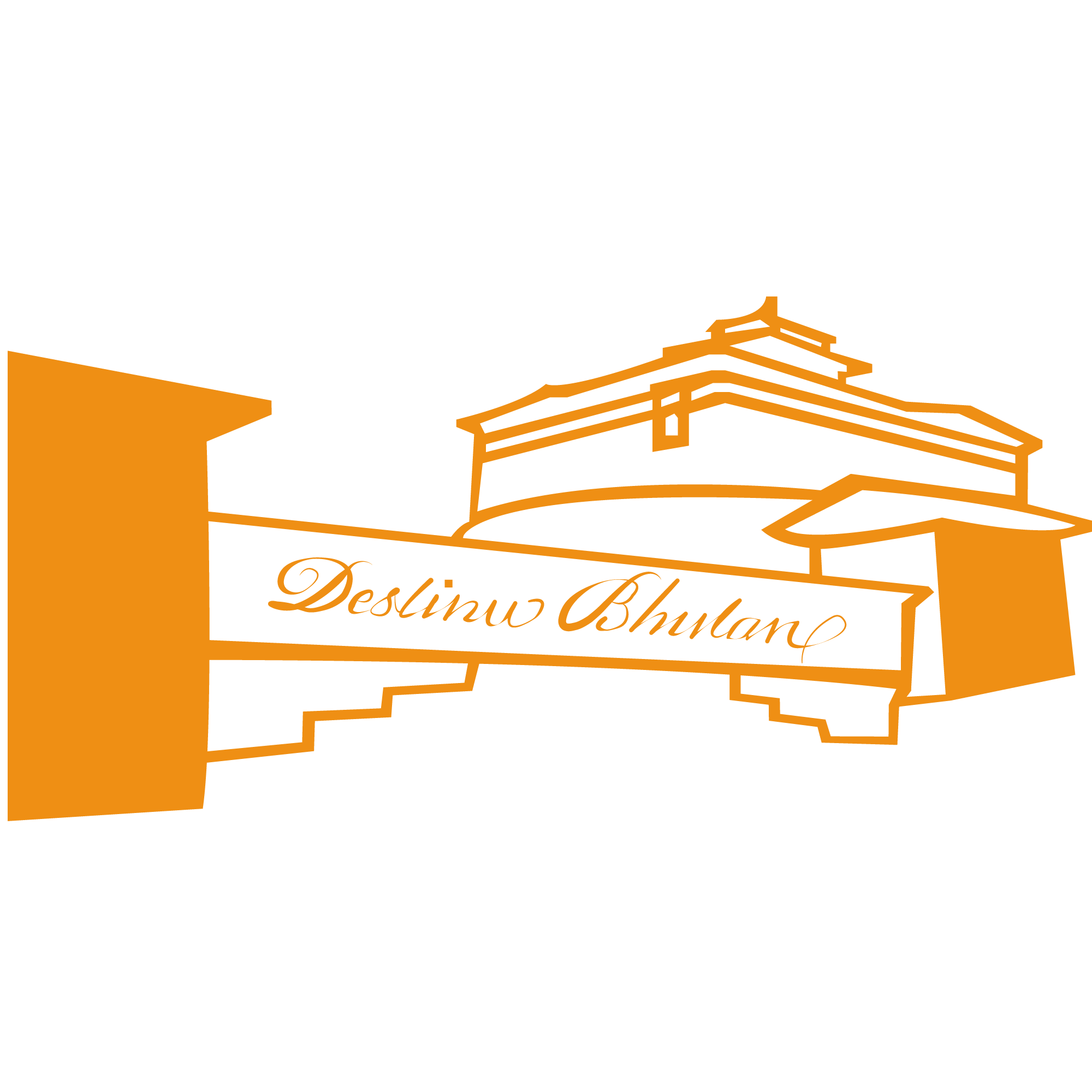Paro
Paro Airport, Bhutan’s only airport, is in the bustling Paro Valley, a densely populated area with numerous attractions. Rinpung Dzong oversees both religious and secular activities, while nearby Ta Dzong, a castle-like watchtower, now houses the National Museum. About 18 kilometers away are the burnt ruins of Drugyel Dzong, which once defended against Tibetan invasions. On clear days, you can see Mount Chhomolhari. Paro is a sacred pilgrimage site, marking Guru Padma Sambhava’s first stop on his journey from Tibet to Bhutan in the 8th century, where he meditated at the Taktsang Monastery. Unfortunately, a 1998 fire damaged the temple, but reconstruction efforts are underway.
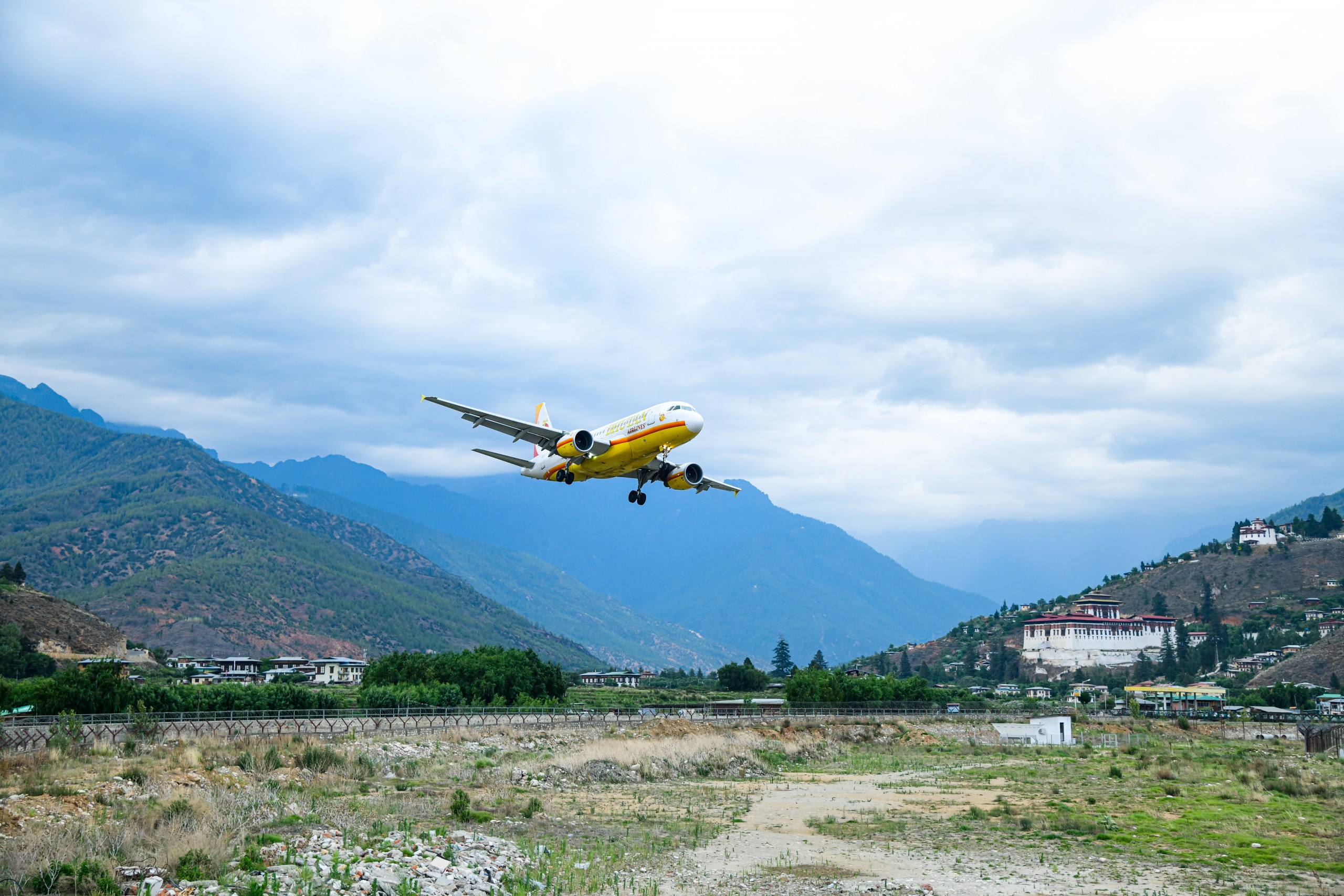
Thimphu
Thimphu is perhaps the most unusual capital city in the world. The Tashichho Dzong is the most prominent landmark situated near the Wang Chhu River and it houses the throne room of the King of Bhutan. During the summer months, the monk body led by His Holiness, the Je Khenpo, makes its home in the Dzong.The National Library holds a vast collection of ancient Buddhist manuscripts and contains arguably the best collection of religious and historical literature in the Himalayas. Some of the other places of interest are the Thangka Painting School, the Indigenous Hospital, the Memorial Chorten built in memory of the third King, Jigme Dorji Wangchuck in 1974.
The Thimphu town is an exciting place for visitors. The town houses are built in traditional style and the people are friendly and helpful. Bhutan’s colorful stamps can be viewed and purchased at the main post office. There are many shops that stock a selection of handicrafts and textiles. Thimphu has changed much over the years but there are still no traffic lights and this will remain long into the 21st century as one of the world’s most pristine capital cities.
Every Saturday and Sunday most of Thimphu’s population and many valley dwellers congregate at the bank of the Wang Chhu river where the weekly markets are held. The fields adjacent to the weekly markets are reserved on weekends for basketball and archery players. Thimphu also has Bhutan’s only golf course – a nine hole circuit which is popular with the residents. Thimphu is also an ideal place for day walks. Phajoding Monastery is a three hour walk from Thimphu and the effort is rewarded with a stunning view over the city and a good example of Bhutanese flora. Other day walks can be taken to Cheri Monastery a steep walk away from the capital. One can also walk up to the Telegraph Hill (Sangay gang) which would give the best view of the whole Thimphu both in the day and the night. Five miles from Thimphu stands the Simtokha Dzong on a lofty ridge. Built in 1627, the Simtokha Dzong is not only the oldest fortress but also houses the School of Buddhist Studies.
Punakha
The road from Simtokha winds through pine forests and villages for 20 kilometers, revealing Dochula Pass at 10,500 feet, offering breathtaking Himalayan views. In winter, Punakha Dzong hosts the Central Monk Body and the Je Khenpo (spiritual leader). Punakha’s warm climate fosters fertile valleys. Chime Lhakhang, perched on a hillock amidst rice fields, is a scenic pilgrimage site for childless couples, associated with Saint Drukpa Kuenlay. It was Bhutan’s capital until 1955, surviving fires and earthquakes, still housing sacred relics and Shabdrung Ngawang Namgyel’s embalmed body. This dzong, at the river confluence, is among Bhutan’s most magnificent.
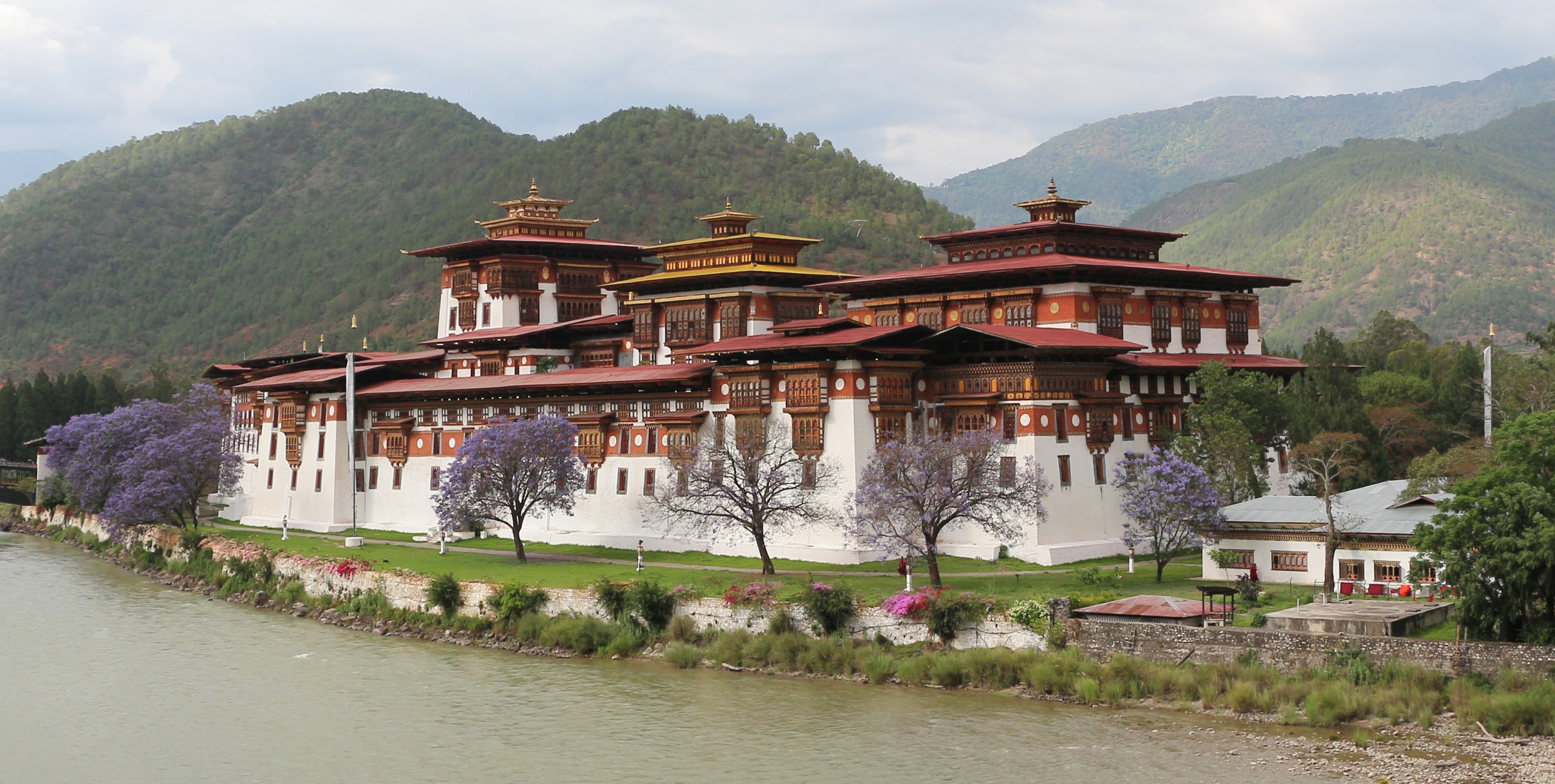
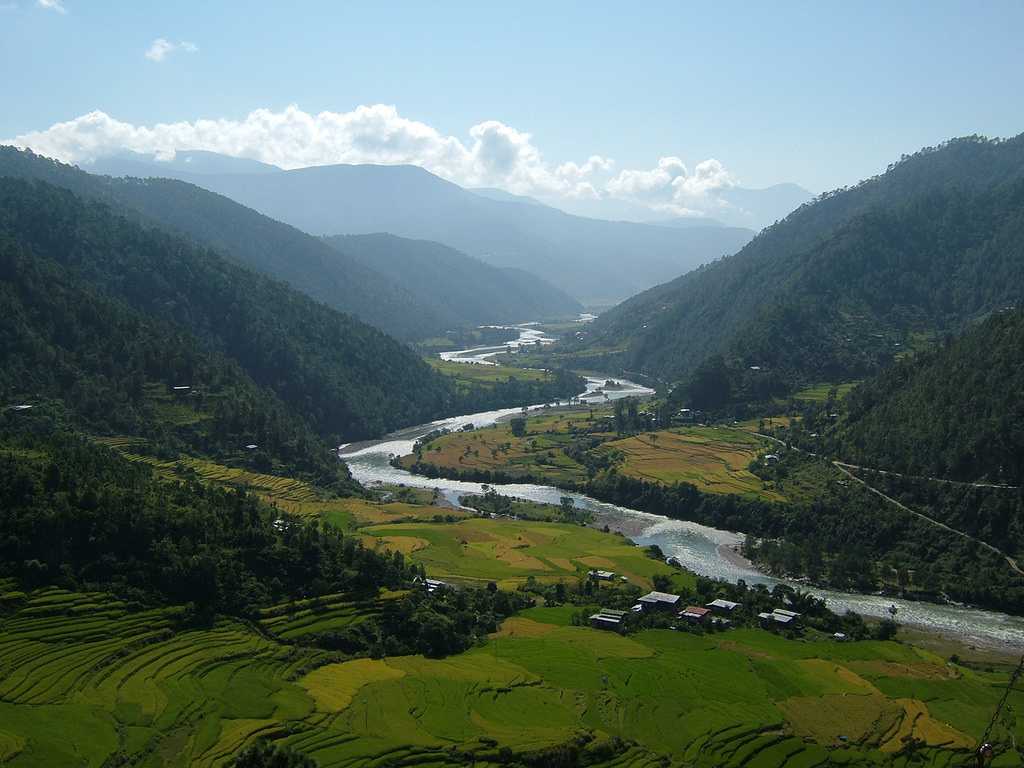
Wangdue Phodrang
This is the last town on the highway before entering Central Bhutan. Sitting on the top of a hill the formidable Dzong is the town’s most visible features. In the 17th century Wangdue played a critical role in unifying western, central and southern Bhutan. The town itself is little more than an enlarged village with well-provided shops and hotels.The road from Wangdue to Trongsa is one of the prettiest in Bhutan passing streams, forests and villages before climbing the Pelela Pass on the Black Mountain ranges in to the Trongsa valley. South of the highway is the Gangtey Gompa an old monastery dating from the 17th century. A few kilometers past the Gompa is the village of Phobjikha – one of the winter homes of the Black Necked Cranes who migrate to Bhutan from Central Asia to pass the winters in lower climes.
Trongsa
This town is located in the center of Bhutan. The Royal Family has strong links with Trongsa. Both the first and the second king ruled the kingdom from Trongsa’s ancient Dzong. The Crown Prince of Bhutan normally holds the position of Trongsa Penlop prior to ascending the throne. The secular and religious center, the Dzong is an impregnable fortress and is itself a labyrinth of temples, corridors and offices. The town is the quaintest and the most charming of all Bhutanese towns. The town’s vista is traditional in appearance as the wooden slatted houses line up together on the side of the hill.
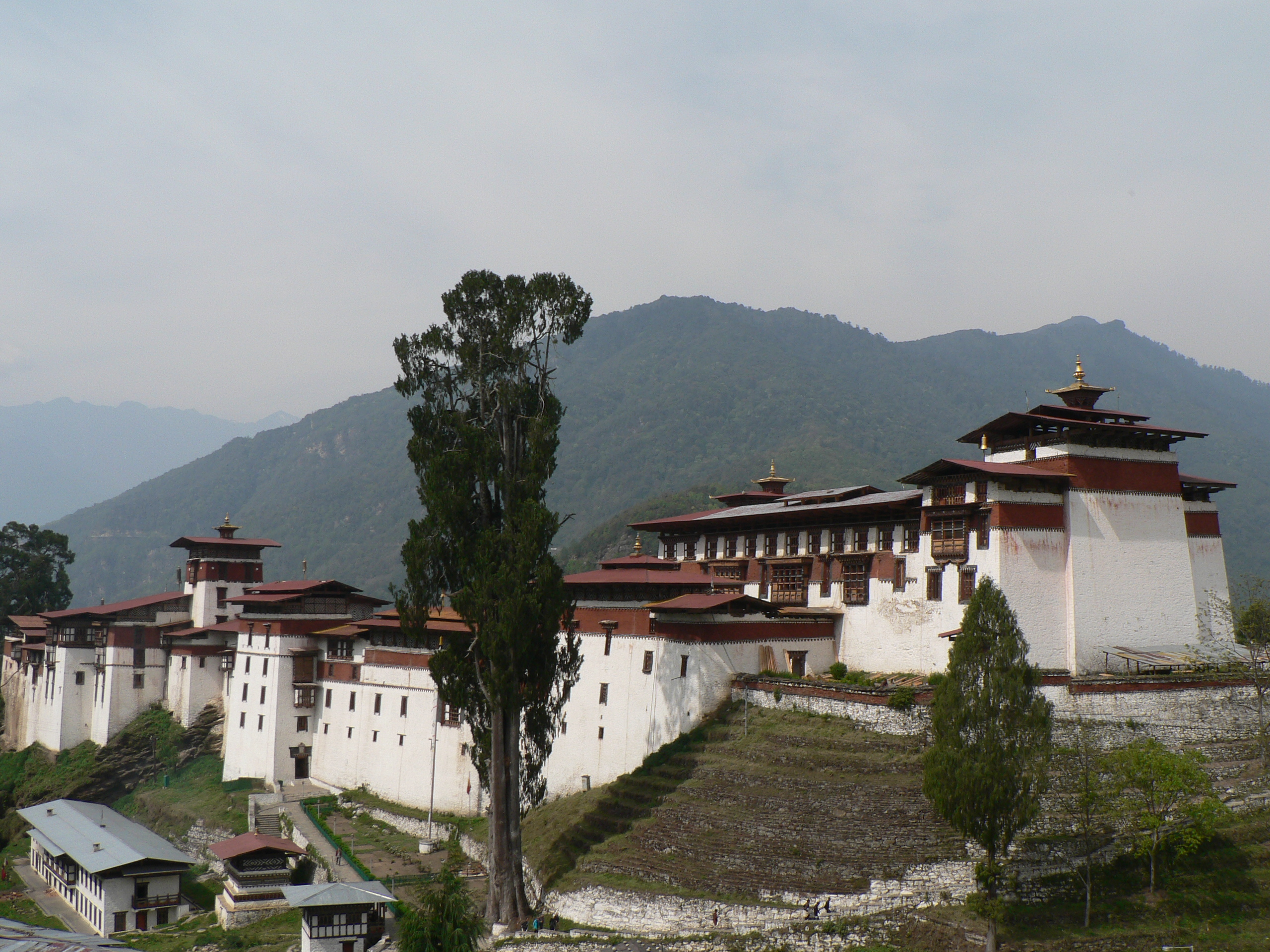
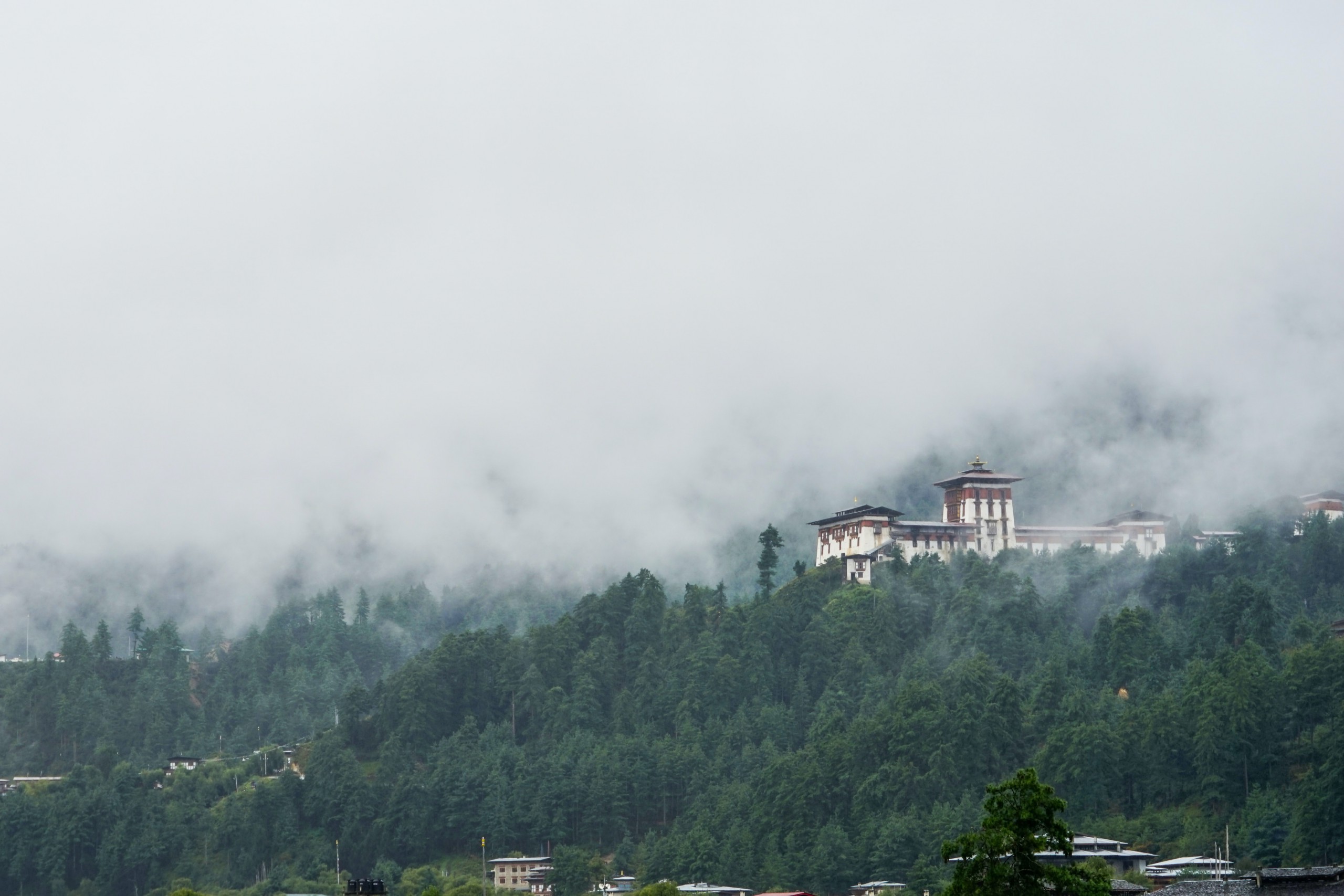
Bumthang
Trongsa and Bumthang valleys are separated by Yutola Pass (Alt 11,500ft). Bumthang, distinct from other regions, comprises four smaller valleys and is steeped in spirituality. Monasteries dot the landscape, with Guru Padma Sambhava’s tales prevalent. Jampa and Kurjey monasteries are sacred here. Bumthang is the ancestral home of the great Buddhist teacher Pema Lingpa, linked to the present monarchy. Jakar, the largest town in this region, is renowned for honey, cheese, apples, and apricots. Bumthang is also famous for yathra, a unique material woven from coarse sheep wool, featuring intricate, colorful patterns. Bumthang Tsechu, along with Paro and Thimphu Tsechu, ranks among Bhutan’s most popular festivals.
Mongar and Lhuntse
Mongar like Trashigang further east, is built on the side of a hill because valleys in Eastern Bhutan are too narrow for towns to develop on the valley floor. Mongar Dzong is modern compared to other Dzongs in the kingdom. Lhuentse is 77 kilometers from Mongar and is one of the most isolated districts in Bhutan. The landscape is spectacular with stark cliffs and gorges and dense coniferous forests. The region is notably famous for its weavers and special textiles and fabrics, generally considered to be the best in the country. The Kurtoe region of Lhuentse is also the ancestral home of the Royal dynasty.
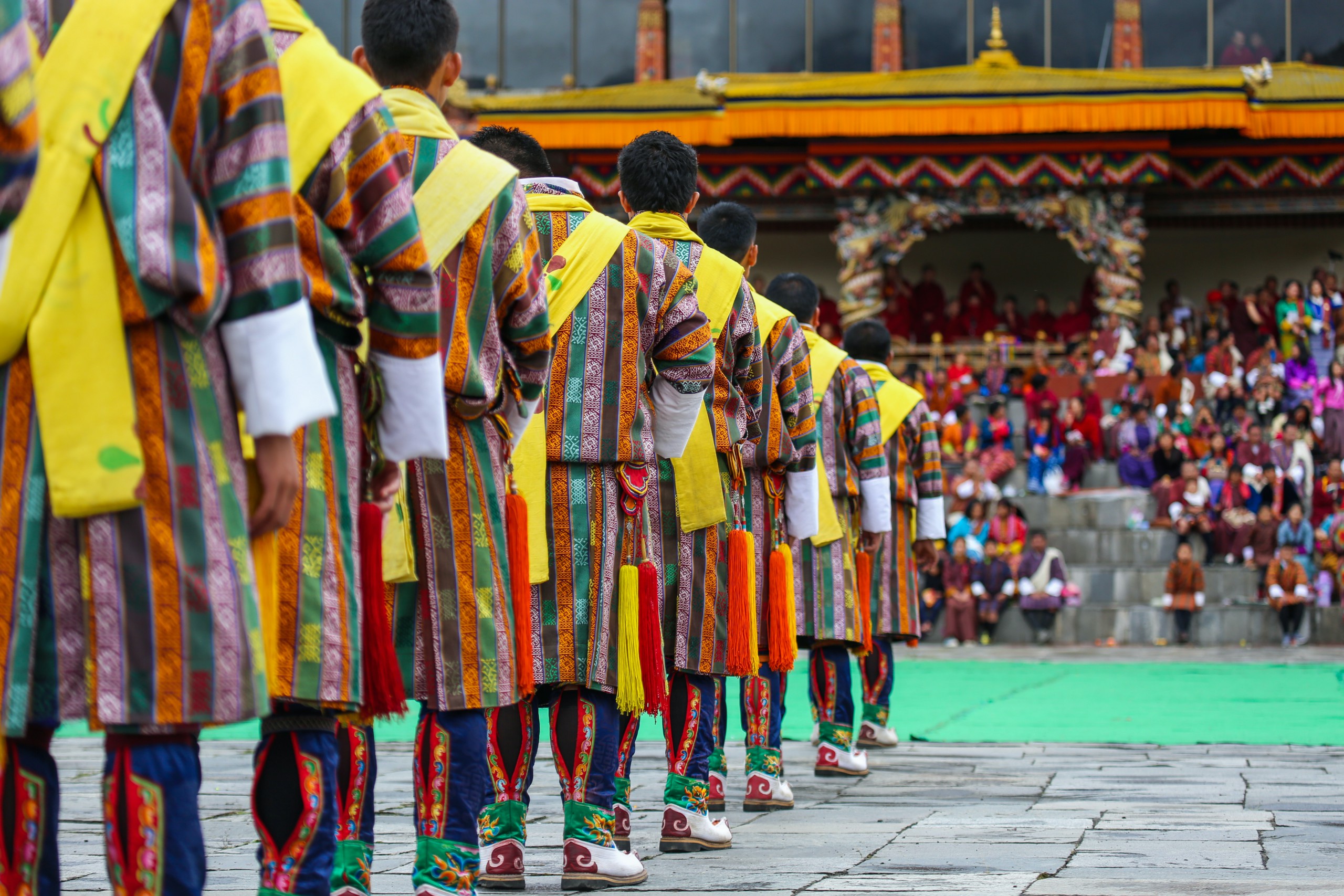
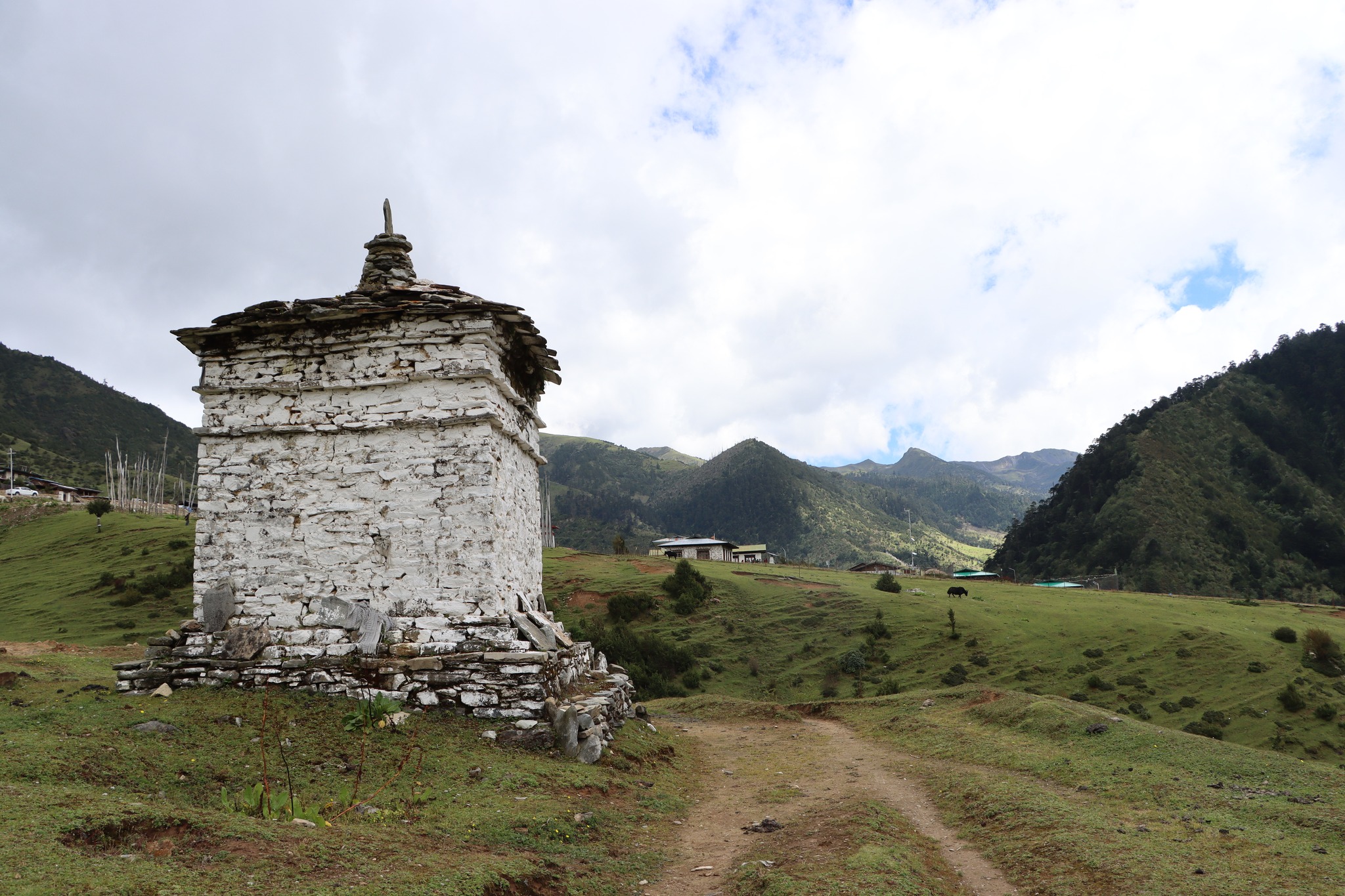
Trashigang and Yangtse
Trashigang, perched high on a mountain, remains the thriving hub for both religious and commercial activities in eastern Bhutan. Its 17th-century Dzong sits dramatically on a cliff’s edge. Trashigang serves as a marketplace for the nomadic Merak and Sakteng people, known for their sharp features and vibrant, unique costumes. Yangtse, once a subdivision of Trashigang, is a new district offering exciting trekking opportunities and a prime spot to observe the elusive Black Necked Cranes. It’s renowned for Chorten Kora, one of the two chortens built in the Nepalese style, as prophesied by Guru Rinpoche. Yangtse is also a hub for traditional Bhutanese woodcrafts.
Southeast and Southwest
The road from Trashigang to Samdrup Jongkhar was completed in the early 1960s and enables the eastern half of the country to access the benefit from the trade in the south as well as providing a border crossing to India. It is possible to exit Bhutan and drive from Samdrup Jongkhar to Phuentsholing via the Indian territories of Assam and West Bengal.The journey from Trashigang passes through Kanglung, a small hamlet where Bhutan’s only college, Sherubtse or Peak of Knowledge is located. Further south along the road is Khaling where one can visit a weaving center and a school for the blind. Pemagatshel is an independent district with its own dzong. The road descends fairly abruptly through thick jungle before arriving at Samdrup Jongkhar. This town is small and bustling and acts as a commercial hub and entry and exit point in the southeast.Phuentsholing is the southwest is a border town and can be used as an exit point from Bhutan.
https://clubgti.com/wp-content/pages/?how-to-deal-with-disputes-at-non-gamstop-casinos.html
